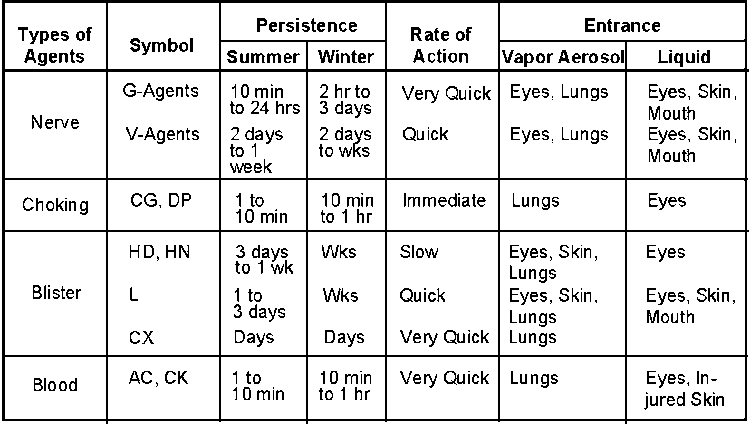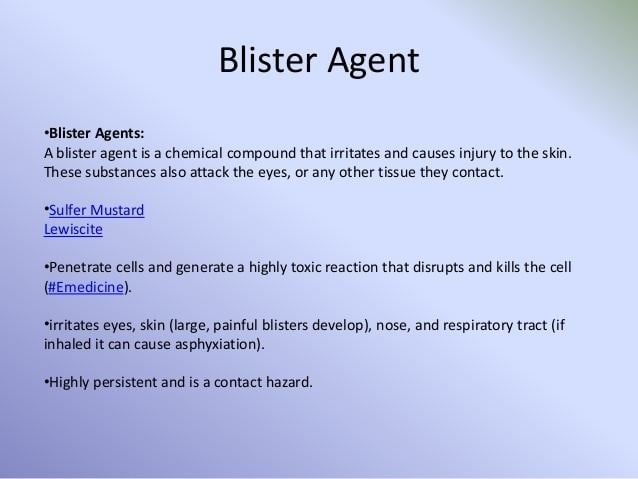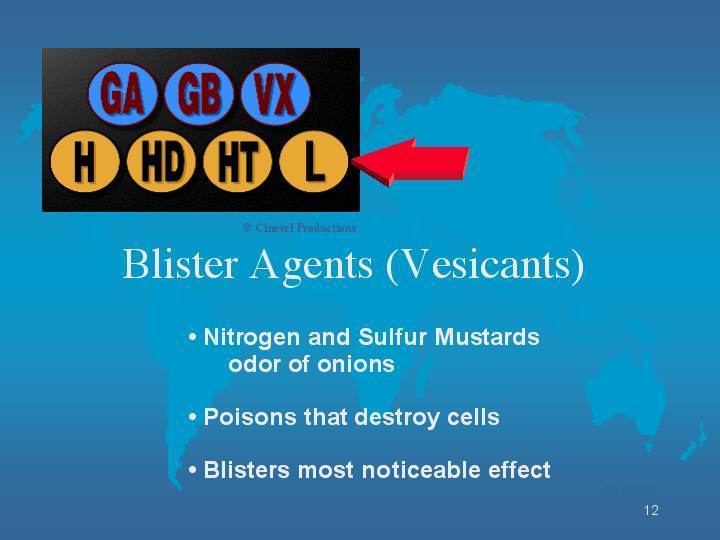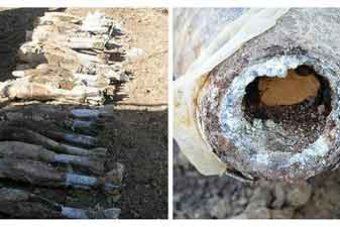 | ||
Decontamination of person exposed to blister agent us army 1942
A blister agent, or vesicant, is a chemical compound that causes severe skin, eye and mucosal pain and irritation. They are named for their ability to cause severe chemical burns, resulting in painful water blisters on the bodies of those affected. Although the term is often used in connection with large-scale burns caused by chemical spills or chemical warfare agents, some naturally occurring substances such as cantharidin are also blister-producing agents (vesicants). Furanocoumarin, another naturally occurring substance, causes vesicant-like effects indirectly, for example, by increasing skin photosensitivity greatly. Vesicants have medical uses including wart removal but can be fatal if even small amounts are ingested.
Contents
- Decontamination of person exposed to blister agent us army 1942
- Chemical weapons blister agents lesson 2 chemical weapons
- Blister agents used in warfare
- Effects of blister agents
- References

Chemical weapons blister agents lesson 2 chemical weapons
Blister agents used in warfare
Most blister agents fall into one of three groups:

Occasionally, phosgene oxime is included among the blister agents, although it is more properly termed a nettle agent (urticant).
Effects of blister agents
Exposure to a weaponized blister agent can cause a number of life-threatening symptoms, including:

All blister agents currently known are heavier than air, and are readily absorbed through the eyes, lungs, and skin. Effects of the two mustard agents are typically delayed: exposure to vapors becomes evident in 4 to 6 hours, and skin exposure in 2 to 48 hours. The effects of Lewisite are immediate.

